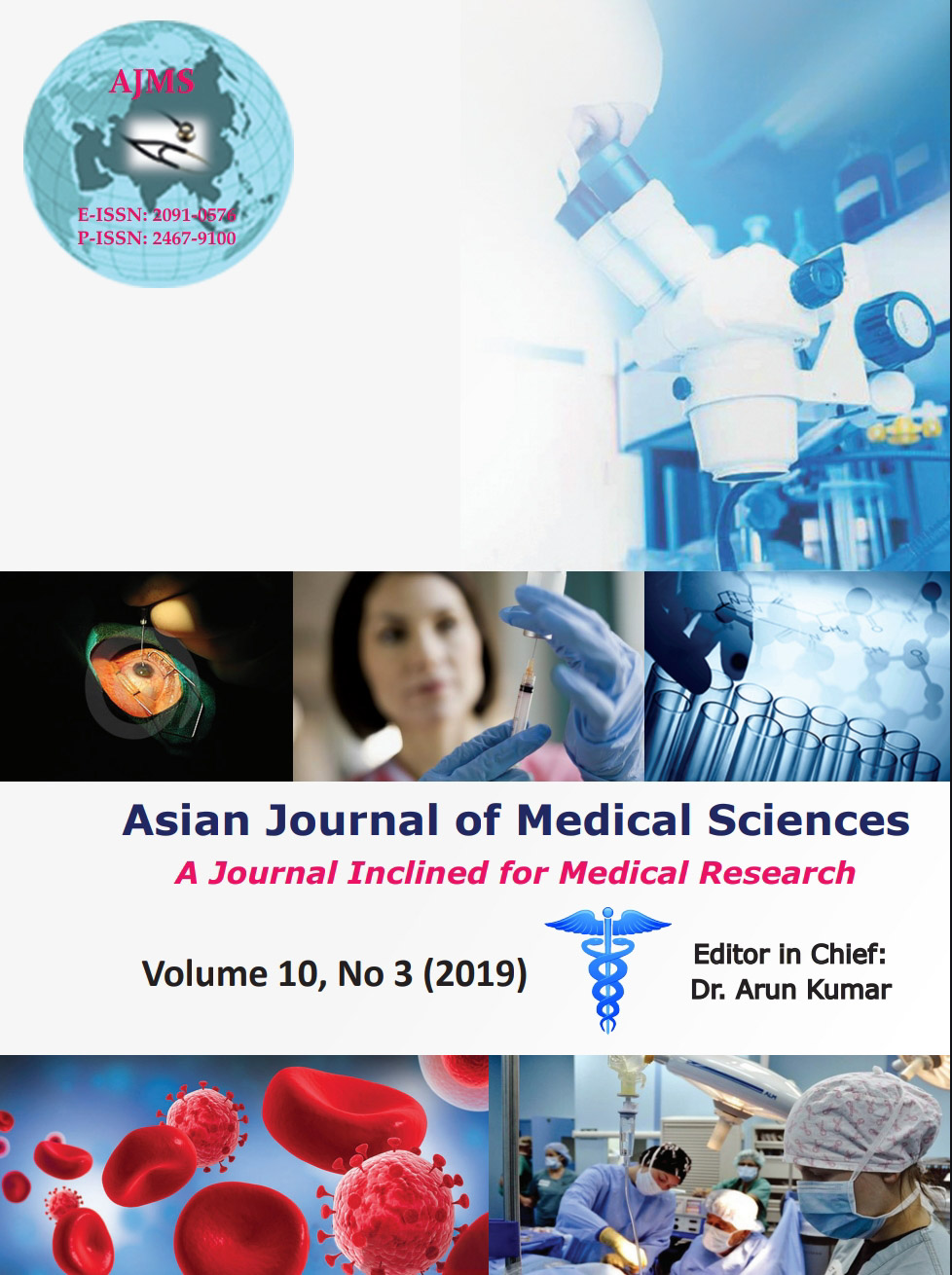ASD device closure in elderly adults
Keywords:
ASD, Trans catheter closure, Amplatzer SeptaloccluderAbstract
Background: Closure of ASDs in elderly patients caused significant clinical and hemodynamic improvement after device closure.
Aims and Objective: We aim to share our experience of ASD device closure in elderly adults.
Materials and Methods: It was a prospective single center study done at Shahid Gangalal National Heart Centre. All elderly patients (>50years) who underwent ASD device closure fromFeb 2016 to July 2018 and completed three months of device closure were prospectively follow up for the symptoms, RA and RV dimension, Tricuspid Regurgitation and Tricuspid Regurgitation pressure gradient (TRPG).
Results: During the study period 48 elderly adults underwent successful ASD device closure. Except one patient we could follow up all patients. Among the patient’s 33 were female, Age ranged from 50years to 72years with the mean age of 55 years. Shortness of breath was the most common symptom during presentation. ASD size ranged from 10mm to 33mm with the mean of 23mm. Device size ranged from 14mm to 40mm with the mean of 29mm. Amplatzer septal occluder was used in 47 patients. RA and RV were dilated in all patients. Mild TR was present in 26 patients, Moderate TR in 17 patients, Severe TR in 5 patients. Mean follow-up time was 12 months. Symptoms reduced in all patients expect one. RA and RV size reduced in all patients. Tricuspid regurgitation pressure gradient reduced from mean of 56 mmHg to Mean of 16 mmHg. During the follow up level of tricuspid regurgitation reduced, 11 patients had mild TR, Trace TR in 15 patients.
Conclusion: ASD device closure can result in improvement in clinical and hemodynamic in elderly adults.
Downloads
Downloads
Published
How to Cite
Issue
Section
License
Authors who publish with this journal agree to the following terms:
- The journal holds copyright and publishes the work under a Creative Commons CC-BY-NC license that permits use, distribution and reprduction in any medium, provided the original work is properly cited and is not used for commercial purposes. The journal should be recognised as the original publisher of this work.
- Authors are able to enter into separate, additional contractual arrangements for the non-exclusive distribution of the journal's published version of the work (e.g., post it to an institutional repository or publish it in a book), with an acknowledgement of its initial publication in this journal.
- Authors are permitted and encouraged to post their work online (e.g., in institutional repositories or on their website) prior to and during the submission process, as it can lead to productive exchanges, as well as earlier and greater citation of published work (See The Effect of Open Access).




